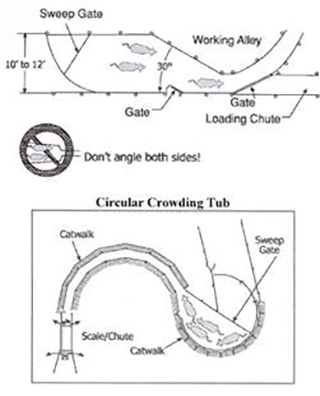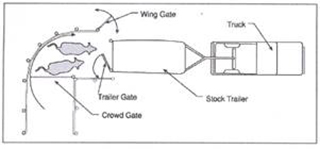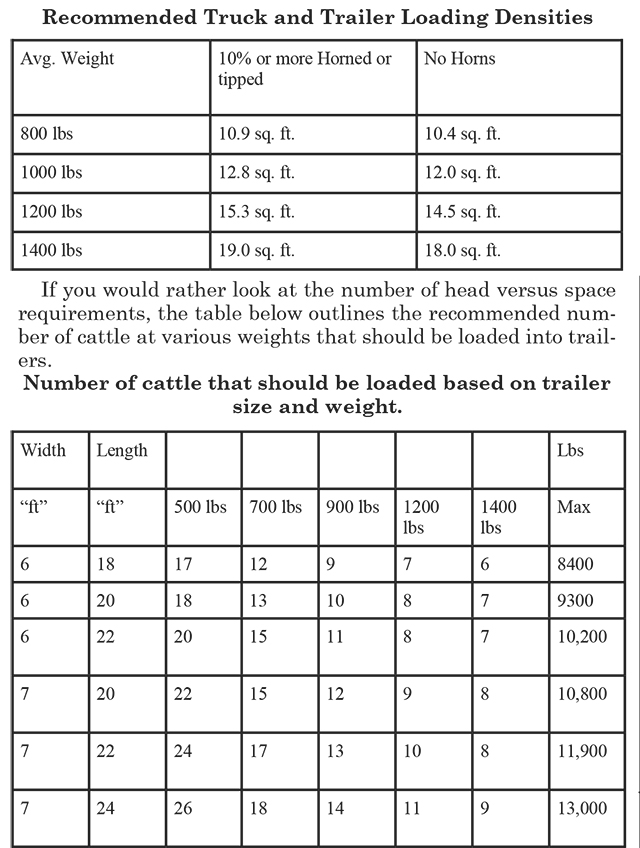Loading and hauling cattle safely
Submitted by Jim Church
I Can’t Afford to Get Hurt!!During this time of the year when cattle producers are loading and moving cattle, it is extremely important to pay attention to detail when it comes to safety. No one can afford to get seriously hurt or worse. There have been chapters in books written about how to safely handle cattle. This is a short newsletter so I will concentrate on loading and hauling safety tips. Before we get into that discussion, everyone that raises cattle knows that there is danger involved when handling cattle. In a study conducted by the Center for Disease Control in 2009, of farm related fatalities in the U.S. between the years 2003 and 2007, there were a total of 2,334 deaths due to farm accidents. 108 or 5% of these deaths were cattle-caused fatalities. The study didn’t report the number of accidents where injuries occurred, and we know that every month there are hundreds of people hurt while handling or moving cattle. It should be the goal of every producer to analyze their handling and loading facilities to ensure safety for themselves, their families and employees. Also, anyone handling cattle should be given training on the proper way to move cattle safely. Facilities There are several very good plans that are designed to combine working facilities and load out areas. Dr. Temple Grandin from Colorado State University is the world’s expert on cattle facilities. She has developed plans that can be accessed on the Internet. A well-planned working facility and load out area allows cattle to flow smoothly while providing handlers with access to the cattle without being in the pen with them.  Straight sided crowding pen (top) and a circular crowding tub (bottom).
Ohio State University produced a
publication entitled, “Cattle Handling and Working Facilities” that
contains some simple but very useful examples of working facilities and
load out areas. These plans emphasize handler safety. The two designs found above are excellent plans. The circular design does not show a load out area, however a gate can be added close to where the chute is located that will open up into a loading area. Again, whatever design you have or hope to have in the future should emphasize handler safety. Catwalks along alleys, swing gates or tubs that keep handlers away from the cattle is critical. Look Out She’s On The Fight! We have all heard many funny stories by cowboy poets about the wild cows and the train wrecks they cause. Most of us have had our turn with this scenario. Understanding animal behavior will help us to avoid these situations along with having good facilities and using appropriate cattle handling techniques. Dr. Temple Grandin, recommends the following when handling cattle: 1. Keep cattle calm. 2. Move cattle at a walk or trot. 3. Reduce noise. 4. Eliminate electric prods. 5. Use behavioral principles, ie. Flight zone. 6. Make cattle flow. 7. Remove distractions. 8. Acclimate cattle to handling. One of the biggest points to remember is the majority of accidents occur when an animal gets separated from the herd through sorting and gets excited causing them to become aggressive. It is recommended to have safety passes strategically located in the working facilities. These are narrow openings just big enough to let a person slip through and escape an aggressive animal. Loading Cattle Loading cattle into trailers creates the perfect time for accidents to occur if we are not careful. Having the correct load out facility will help reduce the chance of an accident or injury. Below is a design for load out pens that was developed by Ohio State University: The design shown is a pull through plan where the truck and trailer pull into the loading area. A gate swings shut behind the trailer. There is a wing gate that closes off one side of the trailer and the end gate closes off the other. Cattle are easily loaded and unloaded. We use this design at the Idaho County Fairgrounds to load and unload livestock and it works great.  Now be honest, we have all said this while loading cattle into our stock trailers. The question is, should we stuff the trailer to the gills? Probably not if we are concerned with our own safety and the safety of the cattle. Overloading trailers is dangerous especially if we exceed the recommended Gross Vehicle Weight Rating of the truck. The truck may not be able to handle the load which creates a safety hazard. Dr. Grandin has developed space recommendations for cattle that are hauled in trucks and trailers. In the graphs at the bottom of the page are Dr. Grandin’s recommendations. Summary Safety should be a top priority for every cattle producer. Steps should be taken to minimize the risk to you, your family and employees. Take the time to: ¨ Inspect your facilities before using them. Make repairs where needed. ¨ Work to improve the facilities to make them safer for handling and loading cattle. ¨ Make sure that you do not overload your trailer. ¨ Take the time to train your employees or other helpers on how to handle cattle and move them safely. References available upon request. 
|
|